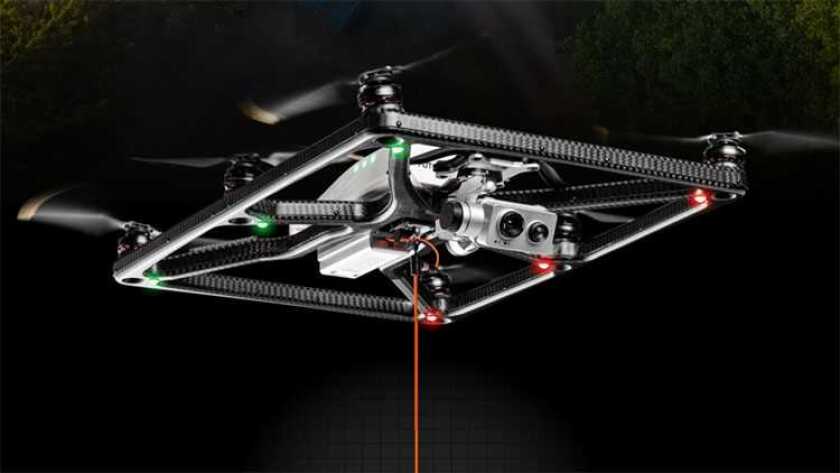The company used a tethered Fotokite Sigma system (pictured) to receive 5G signals from a base station on the ground and to transfer real-time data to first responders at the location and local hospital teams.
Rob Searle, head of 5G at Virgin Media O2, said: “This is an important piece of technology and a further example of how 5G technologies can provide societal benefits. We are relentlessly pursuing new 5G-enabled innovations that will make real differences to people’s lives, from smart cities to connected vehicles and our work with utilities companies to the NHS [National Health Service].”
But the move was odd, as the exclusive contractor for the UK’s emergency services network (ESN) is BT’s mobile division, EE. This was originally due to start taking over from the veteran 2G-based system, called Airwave, from 2017 but the latest estimates suggest 2025 – at a huge cost to the UK government, which is paying £600 million a year to keep Airwave going beyond its planned retirement.
The replacement network, which is 4G-based, is billions over budget. By the time it is in operation, both BT/EE and Virgin Media O2 as well as Three UK and Vodafone UK will be well through their 5G investment programmes – yet the ESN will be still anchored in 4G technology.
Virgin Media O2, owned by Liberty Global and Telefónica following the merger this year, said that its drone, bought from a Swiss company, Fotokite, provides “ultra-reliable low latency, uninterrupted aerial monitoring”. It can be set up in two minutes.
“The drone allows first responders to quickly send a tethered drone up to 45 meters above a situation, enabling emergency on-site personnel – and teams based in other locations connected by a 5G network – to immediately assess what’s happened.”
It’s not a potential replacement for the ESN, which is at least £3.1 billion over budget, now priced at a total of around £9.3 billion. But it could be seen as Virgin Media O2 firing a well-timed shot across BT’s bows.
Virgin Media O2’s 5G technology programme manager, Martin Hunt, who is also the medical rescue coordinator for the British Automobile Racing Club, said: “The use of drones for emergency responders is an increasingly valuable tool, as the rising number of applications and lower flying complexity make it quick and easy to manage.”
He added: “Being able to stream live feeds via a 5G network from the operational ‘hot zone’ of a major incident back to offsite strategic teams enables instant feedback and decision-making that could save lives.”
Last year EE gave a contract to Nokia to augment the ESN. Under the new deal, Nokia will install extra 4G coverage for airborne services operating from 500 feet to 10,000 feet above the ground, to augment the network.






